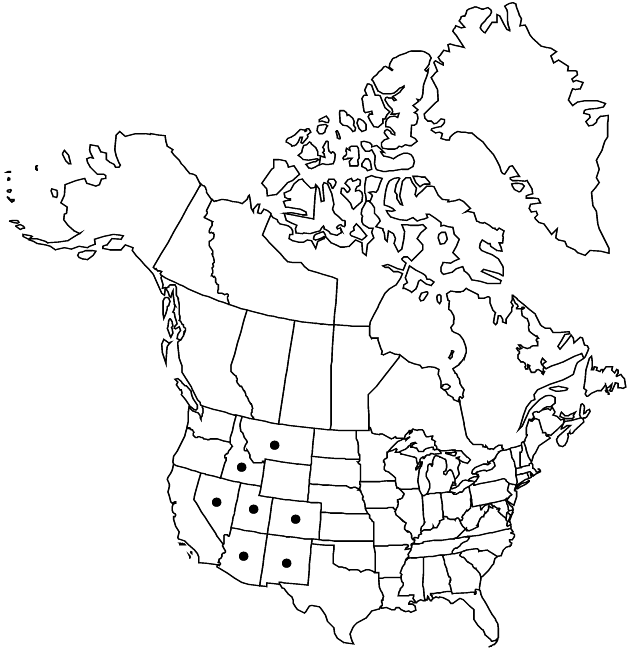Difference between revisions of "Solidago nana"
Trans. Amer. Philos. Soc., n. s. 7: 327. 1841.
FNA>Volume Importer |
imported>Volume Importer |
||
| (3 intermediate revisions by 2 users not shown) | |||
| Line 8: | Line 8: | ||
}} | }} | ||
|common_names=Baby or dwarf goldenrod | |common_names=Baby or dwarf goldenrod | ||
| + | |special_status={{Treatment/ID/Special_status | ||
| + | |code=E | ||
| + | |label=Endemic | ||
| + | }} | ||
|basionyms= | |basionyms= | ||
|synonyms={{Treatment/ID/Synonym | |synonyms={{Treatment/ID/Synonym | ||
|name=Aster nanus | |name=Aster nanus | ||
|authority=(Nuttall) Kuntze | |authority=(Nuttall) Kuntze | ||
| + | |rank=species | ||
}} {{Treatment/ID/Synonym | }} {{Treatment/ID/Synonym | ||
|name=Solidago nivea | |name=Solidago nivea | ||
|authority=Rydberg | |authority=Rydberg | ||
| + | |rank=species | ||
}} | }} | ||
|hierarchy=Asteraceae;Asteraceae tribe Astereae;Solidago;Solidago sect. Solidago;Solidago subsect. Nemorales;Solidago nana | |hierarchy=Asteraceae;Asteraceae tribe Astereae;Solidago;Solidago sect. Solidago;Solidago subsect. Nemorales;Solidago nana | ||
| Line 38: | Line 44: | ||
-->{{#Taxon: | -->{{#Taxon: | ||
name=Solidago nana | name=Solidago nana | ||
| − | |||
|authority=Nuttall | |authority=Nuttall | ||
|rank=species | |rank=species | ||
| Line 52: | Line 57: | ||
|publication title=Trans. Amer. Philos. Soc., n. s. | |publication title=Trans. Amer. Philos. Soc., n. s. | ||
|publication year=1841 | |publication year=1841 | ||
| − | |special status= | + | |special status=Endemic |
| − | |source xml=https:// | + | |source xml=https://bitbucket.org/aafc-mbb/fna-data-curation/src/2e0870ddd59836b60bcf96646a41e87ea5a5943a/coarse_grained_fna_xml/V19-20-21/V20_351.xml |
|tribe=Asteraceae tribe Astereae | |tribe=Asteraceae tribe Astereae | ||
|genus=Solidago | |genus=Solidago | ||
Latest revision as of 20:02, 5 November 2020
Plants 10-50 cm; rhizomes stout or caudices branching. Stems 1–6, decumbent to ascending, finely and densely puberulent. Leaves: basal present at flowering; basal and proximal petiolate, blades oblanceolate to narrowly obovate or spatulate, 20–100 × 5–20 mm, basal much smaller than proximal, margins serrate or entire, somewhat 3-nerved, apices obtuse to acute, cuspidate, faces moderately to densely finely puberulent; mid and distal cauline sessile, blades oblanceolate to elliptic to base, 1 prominent nerve, 10–30 × 4–12 mm, greatly reduced distally, attenuate, margins entire or distally serrate, apices acute, faces densely finely puberulent. Heads 30–100, in broadly corymbiform (modified paniculiform) arrays, sometimes somewhat secund. Peduncles 2–7 mm, moderately puberulent; bracteoles 0–2, elliptic, minute. Involucres campanulate, 4–6 mm. Phyllaries in 3–4 series, oblong, strongly unequal, margins ciliate, apices blunt, glabrous. Ray florets (5–)6–10 (fewer than number of disc florets); laminae ca. 3 × 1.3–1.6 mm. Disc florets 8–20; corollas 4–4.5 mm, lobes 0.8–1.1 mm. Cypselae (narrowly obconic) 2–2.8 mm, sparsely strigose; pappi 3.5–4 mm. 2n = 18.
Phenology: Flowering Aug–Sep.
Habitat: Dry to wet soils, often alkaline meadows and flats, open wooded slopes
Elevation: 1700–2700 m
Distribution

Ariz., Colo., Idaho, Mont., Nev., N.Mex., Utah.
Discussion
Selected References
None.